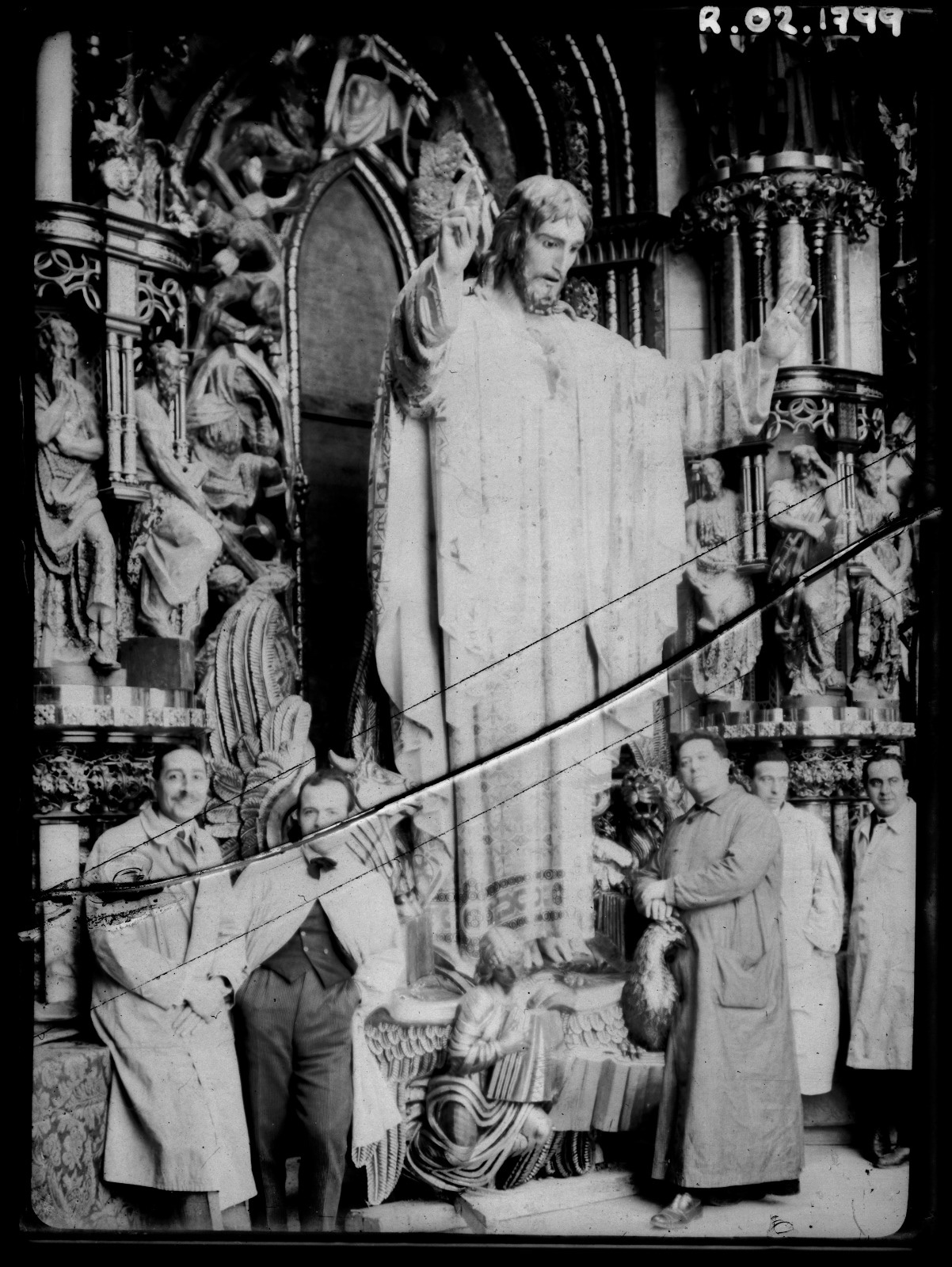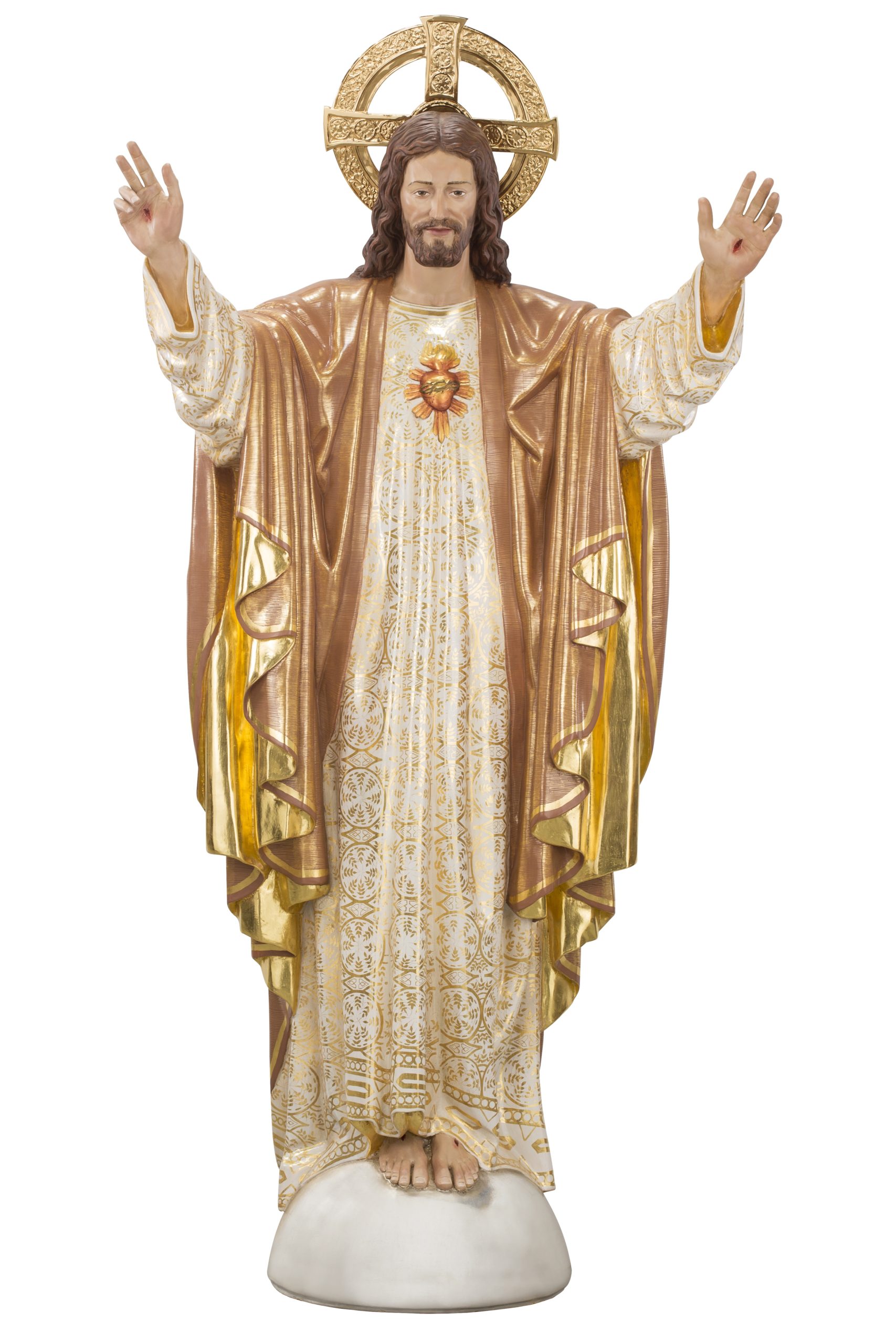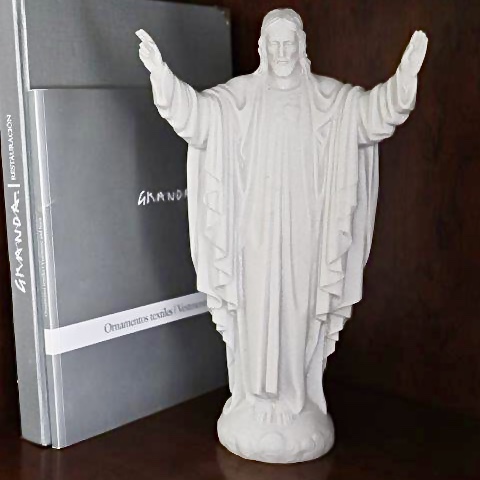Devotion to the Sacred Heart of Jesus has historically been one of the most loved and practiced by the faithful in Spain. This predilection began to spread in our nation in the 18th century thanks to the work of the Jesuit priest Blessed Bernardo de Hoyos. On May 14, 1733, Ascension Day, he received from Christ the revelation of the Great Promise: "I will reign in Spain, and with more veneration than elsewhere".
Already in the 20th century, on May 30, 1919, Spain was finally consecrated to the Sacred Heart, in a solemn ceremony presided over by H. M. Don Alfonso XIII in the Cerro de los Angeles (today in the diocese of Getafe), the geographical center of our country. With this, the devotion experienced a great development.

Don Felix Granda (1868-1954), as a son of his time, was a fervent devotee of the Sacred Heart. He dedicated numerous works to the Sacred Heart, among which are some of the most important works produced by the Art Workshops during his lifetime. He also wrote about the theological ideas on which he based the iconography of his works dedicated to Him. In these writings, without detracting one iota of importance from the work of St. Margaret of Alacoque and Blessed Father Hoyos, he emphasized the antiquity of this devotion in the Church:
"Let us not forget that the first manifestation of the Heart of Jesus took place on the Cross. And the pure souls, following St. Augustine, saw in the words of St. John the Evangelist the invitation to penetrate through the Side that opened the lance; the door through which to enter the secrets of the Heart of Christ. The Sore Side has always been the refuge and consolation of the Saints, because it put them in contact with the Heart of Christ's flesh, organ and symbol of His sacrificed charity."

Among them, the altarpiece of the Jesuit church of the Sacred Heart in Havana (Cuba), popularly known as the church of Reina, from 1922, stands out in the first place. It is presided over by a monumental carving of the Sacred Heart executed by José Capuz, then a sculptor at the Talleres de Arte de Granda. The altarpiece contains a complex iconographic program, in which the presence of the saints of the Jesuit order stands out.
In 1933 the commission for the altarpieces for the National Shrine of the Great Promise in Valladolid (Spain) materialized, whose main altarpiece, as it could not be otherwise, also presents a large carving of the Sacred Heart, this time the work of the sculptor Julio Vicent. The work was interrupted by the Civil War, during which the altarpiece remained, according to the memory preserved in our company, hidden in a partition in the Workshops, and was completed in 1942. In 1952 the altarpiece for the Basilica of the Sacred Heart of Bogota (Colombia), better known as the Voto Nacional, was also made in Talleres de Arte.
Countless are the carvings and sculptures dedicated to the Sacred Heart of Jesus by our company throughout its history. Among the dozens of different models that our artists have made and continue to make today, the one made by Julio Vicent for the Gran Promesa de Valladolid undoubtedly stands out for its widespread devotion. In 2017 we made the carving that we show in the photograph based on this image, destined for the Samaritan Carmelites of the Sacred Heart, closely linked to the Valladolid temple. Its stew, in turn, is inspired by the motifs of the tunic of the carving of the Sacred Heart of Havana.

The Sacred Heart also always had a special place in domestic devotion. Although this practice fell somewhat into disuse in the last quarter of the twentieth century, it was common to find in Spanish homes an image or a small altar dedicated to the Sacred Heart, a custom that has never been completely abandoned. Recently, we have made for this purpose a small sculpture, based on our model of the carving of the Sacred Heart of the Great Promise.

